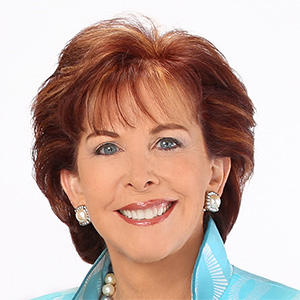Uncover the Types of Pension Funds Available for Every Office Employee
Published in Business Articles
Pension funds are essential for every office employee planning for retirement. They help you save money and secure your future.
With various types of pension funds available, it can be overwhelming to choose the right one. Understanding these options can empower you to make informed decisions.
In this blog post, we will explore the types of pension funds available for office employees. Learn how each type works and find the best fit for your financial needs.
Defined Benefit Pension Plans
Defined benefit pension plans are a common choice for many employees. These plans promise a specified monthly benefit in retirement. The amount usually depends on salary and years of service.
With defined benefit plans, employees have a clear understanding of what they will receive. This helps in planning for the future. Many workers find this stability reassuring.
However, these plans can be complex. They require careful management by employers. This type of plan reduces risk-sharing since the employer bears most of the investment risk.
Contribution Pension Plans
Contribution pension plans are another popular option for employees. In contribution plans, employees and employers contribute money to individual accounts in the plan. The final benefit is based on contributions and investment returns.
This type of plan allows employees to have more control over their retirement savings. Workers can decide how much money to contribute each pay period. The amount saved will grow over time due to investments.
Contribution plans can also make it easier to change jobs. Employees can often roll over their accounts to a new employer’s plan. This flexibility helps keep their retirement savings intact as they move through their careers.
Cash Balance Plans
Cash balance plans are a type of defined benefit plan. They guarantee a specific monthly payment at retirement, but the amount is determined by a set formula rather than salary and years of service. This means employees know what to expect when they retire.
Under these plans, employers manage their investments. Each employee has a hypothetical account, which grows over time. The growth is based on interest credits set by the plan.
Employees can receive their benefits in cash or as an annuity. This flexibility can help meet different financial needs. Cash balance plans combine stability with ease of understanding, making them a solid choice for many workers.
Employee Stock Ownership Plans (ESOPs)
Employee Stock Ownership Plans, or ESOPs, are a unique way to reward employees. ESOPs allow employees to become partial owners of the company through stock ownership. This gives employees a stake in the success of the business.
These plans can improve employee morale and productivity. When employees own part of the company, they often feel more invested in its success. This can lead to a stronger commitment to their work and the organization’s goals.
While not a traditional pension fund, ESOPs can significantly contribute to retirement savings, particularly if the company performs well. Employees can benefit from the rising value of their stock over time. This can be a valuable supplement to other retirement plans.
SIMPLE IRA Plans
The Savings Incentive Match Plan for Employees (SIMPLE IRA) is suitable for small businesses. Both employee and employer contribute, with the account growing tax-deferred. This plan is easy to set up and maintain, making it ideal for small companies.
Employees can choose how much to save from their paychecks. Employers are required to match a portion of these contributions. This matching can incentivize employees to save more for their retirement.
SIMPLE IRAs are less complex than other retirement plans. They have lower administrative costs and fewer regulations. This makes them an attractive option for small businesses looking to offer retirement benefits.
Roth 401(k) Plans
A Roth 401(k) combines the features of a traditional 401(k) and a Roth IRA. Contributions are made with after-tax dollars, but qualified withdrawals in retirement are tax-free. The plan lets employees save money while enjoying tax benefits later on.
Employees can choose how much to contribute in each pay period. The employer may also match some of these contributions. This helps workers grow their retirement savings faster.
Roth 401(k) plans are easy to manage. They have simple rules and clear benefits. Many employees find them an appealing option for building their future.
457(b) Plans
A 457(b) plan is available to state and local government employees and some non-profits. It functions like a 401(k) but without the early withdrawal penalty if you leave your job before retirement age. This option lets employees save money for their future while enjoying tax benefits.
In a 457(b) plan, employees can set aside a portion of their salary each month. The money in the plan grows tax-deferred, meaning you don’t pay taxes on it until you withdraw it. This can help increase your savings over time.
Employers may also contribute to these plans, boosting your retirement funds. Employees have flexibility in managing their investments within the plan. Overall, a 457(b) plan can be a great choice for those eligible for this retirement savings option.
Investing in Alternatives
Investing in alternatives can be a smart move for many employees. These options often provide a chance for growth beyond traditional stocks and bonds. They can also offer protection against inflation.
For employees looking to diversify their retirement portfolio, investing in alternatives like real estate, private equity, or commodities can be a viable option. Each of these investments comes with its risks and rewards. It’s important to research and understand them well.
Alternative investments can improve overall portfolio performance. They may not be as liquid as stocks. However, they can provide unique opportunities for capital appreciation.
Securing Your Future: A Roadmap for Every Office Employee
In conclusion, understanding the different types of pension funds is crucial for every office employee. Each plan offers unique benefits and risks. By learning about these options, you can make better choices for your retirement savings.
It is important to consider your personal needs and financial goals. Start planning today to build a secure future. Your efforts today will help ensure a comfortable retirement tomorrow. Make informed decisions and take charge of your financial well-being.
Did this article help you? If so, take a look at some of our other blog posts for more informative reads.











Comments